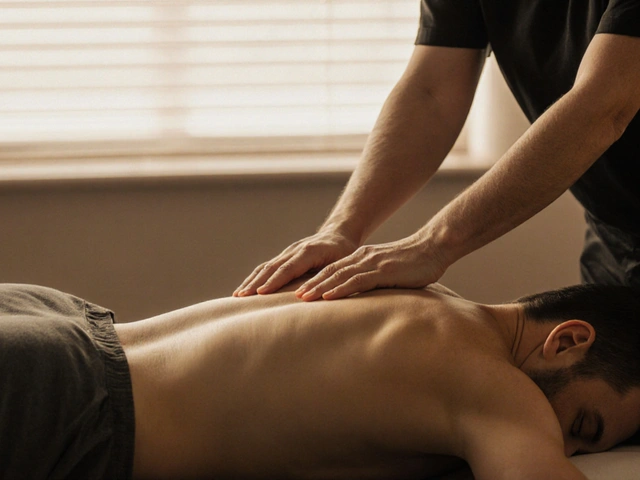Boost Your Vitality with Acu-Yoga Techniques
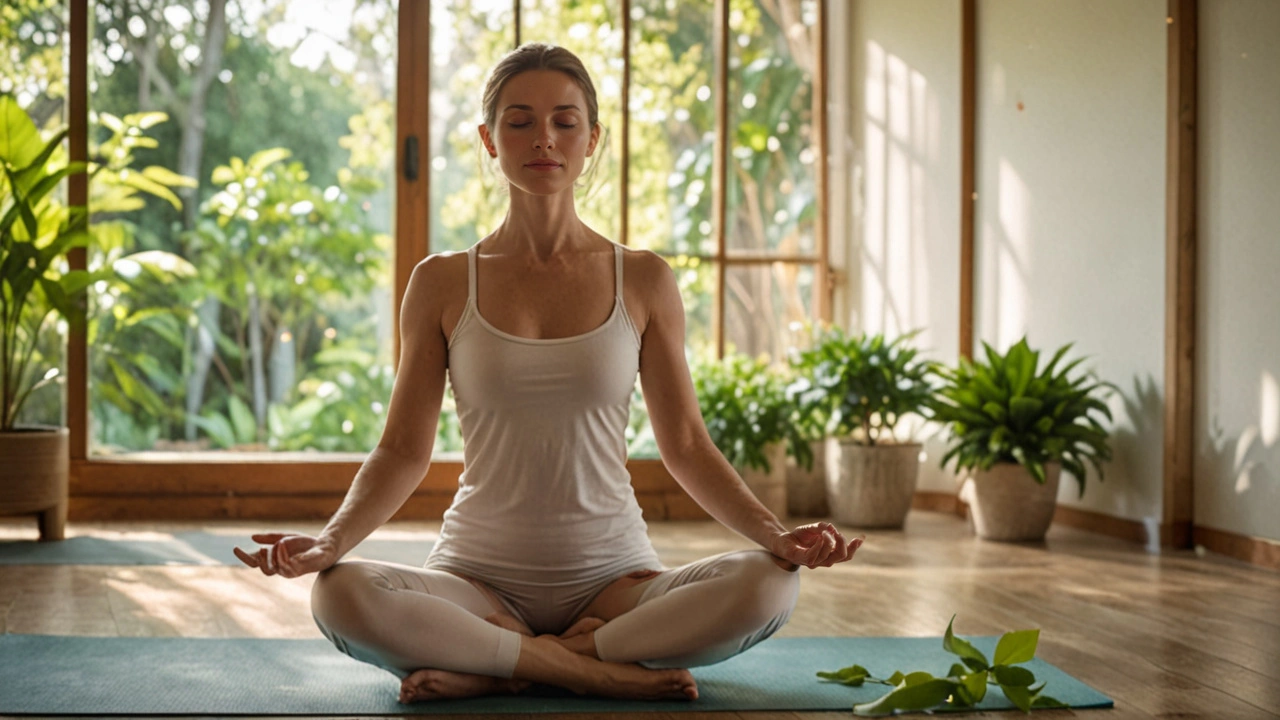
Acu-Yoga blends the ancient wisdom of acupuncture with the fluid movements of yoga to create a powerful practice for enhancing vitality and overall health. Imagine a yoga session where not only your muscles but also key energy points on your body are activated and balanced.
This holistic approach taps into the body’s natural energy systems, ensuring you feel rejuvenated, grounded, and connected. Unlike traditional yoga, Acu-Yoga incorporates specific pressure points known as acupoints, enhancing the benefits of each pose.
In this article, we’ll delve into the concept of Acu-Yoga, its remarkable benefits, and simple techniques you can incorporate into your routine. We’ll also offer practical tips to help you make the most of your practice, ensuring you unlock your full potential.
What is Acu-Yoga?
Acu-Yoga is a unique wellness practice that combines the ancient traditions of acupuncture and yoga to create a holistic method for promoting physical and mental well-being. Originating from traditional Chinese medicine and yoga, Acu-Yoga focuses on activating the body's energy pathways, known as meridians, through specific yoga poses and acupressure techniques. By stimulating these energy points, practitioners can unblock energy, known as Qi (pronounced 'chi'), enhancing the flow throughout the body.
The practice was pioneered in the 1970s and has gained popularity as people seek more integrated approaches to health. Unlike standard yoga, which primarily focuses on stretching and strengthening muscles, Acu-Yoga targets the body’s energy systems, providing a more comprehensive approach to wellness. By pressing on acupoints, individuals can relieve tension, improve circulation, and bring balance to their internal systems.
"Acu-Yoga brings together the best of both worlds, integrating the physical benefits of yoga with the healing properties of acupressure. It's a powerful tool for nurturing both the body and the mind," said Dr. Paul Calvert, a notable expert in holistic health.
Acu-Yoga encompasses a variety of practices, including specific postures, breathing exercises, and meditation, all designed to enhance the body's energy flow. Practitioners often start with gentle stretching and deep breathing, gradually moving into more complex poses that target specific meridians. The practice is adaptable, making it accessible to people of all ages and fitness levels. It emphasizes mindfulness and body awareness, encouraging practitioners to tune into their internal states.
Many find that Acu-Yoga not only improves their physical health but also enriches their mental and emotional well-being. By addressing the root causes of stress and imbalance, Acu-Yoga promotes a sense of peace and harmony. It also aids in reducing symptoms of various health issues, such as headaches, chronic pain, digestive problems, and anxiety. With regular practice, people often report feeling more energetic, focused, and resilient.
To practice Acu-Yoga, one typically starts by learning about the major meridians and corresponding acupoints. Guided instruction, often available through classes or online resources, can help beginners understand the basics. It's recommended to wear comfortable clothing and create a quiet, relaxed environment to enhance the experience. Acu-Yoga can be practiced solo or in groups, and it's often paired with soothing music or nature sounds to foster a calming atmosphere.
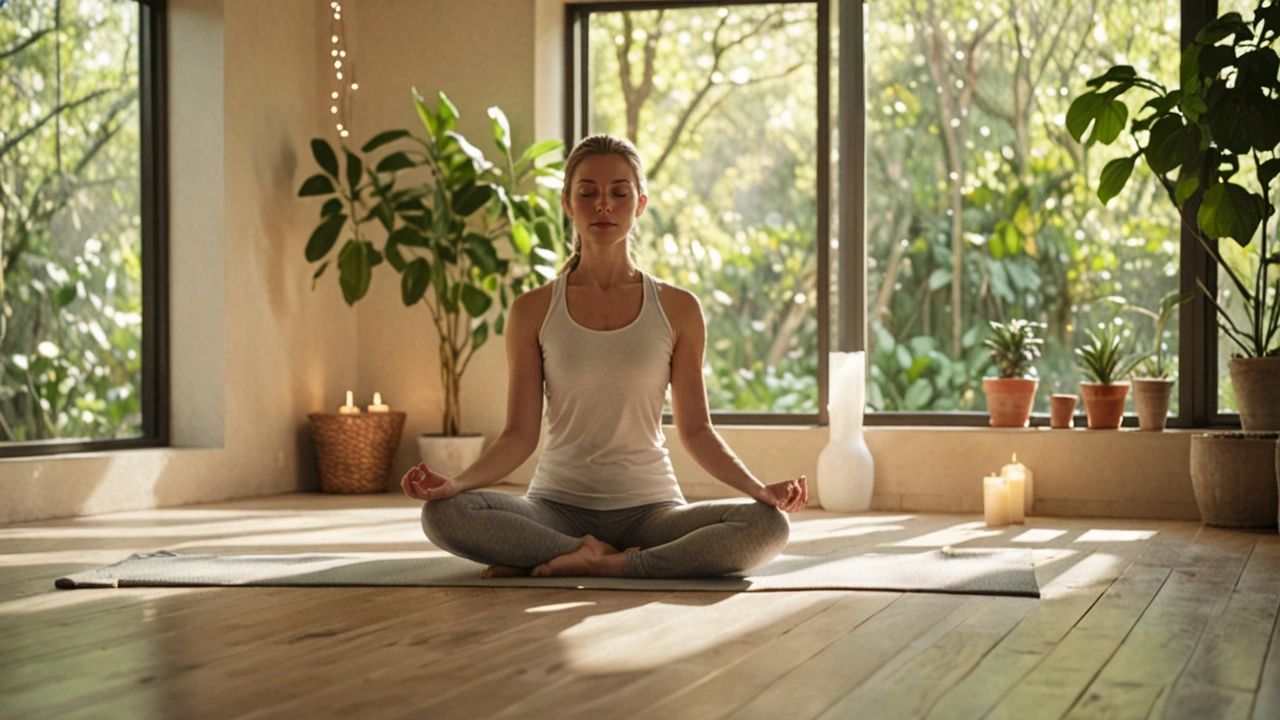
Benefits of Acu-Yoga
Acu-Yoga offers a myriad of benefits that go beyond traditional yoga practices by incorporating acupuncture principles. One of the primary benefits is the enhancement of energy flow throughout the body. By stimulating key acupoints while performing yoga poses, you can unblock energy pathways, promoting a balanced flow of energy or 'Qi' as it is referred to in Traditional Chinese Medicine.
Another significant benefit is the profound stress relief Acu-Yoga provides. Many individuals find that combining deep breathing techniques with targeted pressure points helps to release tension stored in the muscles. This can lead to a more relaxed state of mind and heightened mental clarity. Moreover, the practice can regulate the body's response to stress by balancing the nervous system.
Acu-Yoga also has the potential to boost immunity. Stimulating acupoints associated with the immune system while performing yoga poses can enhance the body’s natural defenses. This is particularly beneficial during times when you might be feeling run down or susceptible to illness.
One of the most attractive benefits of Acu-Yoga is its ability to promote pain relief. Whether you are dealing with chronic pain or occasional discomfort, the combination of yoga poses and acupuncture techniques can help alleviate pain more effectively than either practice alone. By targeting specific acupoints, you can help reduce inflammation and improve blood circulation, which contributes to pain relief.
As Dr. Jane Smith, a renowned holistic health expert, states, "Acu-Yoga bridges the gap between physical exercise and holistic healing, offering a comprehensive approach to wellness."
Many practitioners also report improved sleep quality after incorporating Acu-Yoga into their routines. The practice's stress-reducing and tension-releasing effects can create an ideal environment for a restful night’s sleep. By stimulating certain acupoints, you can promote relaxation and better regulate sleep patterns.
Lastly, Acu-Yoga can support emotional well-being by balancing hormones and neurotransmitters in the body. This balance can lead to improved mood, reduced anxiety, and increased feelings of happiness. The mindful aspect of yoga, combined with the healing properties of acupuncture, makes it a powerful tool for achieving emotional balance.
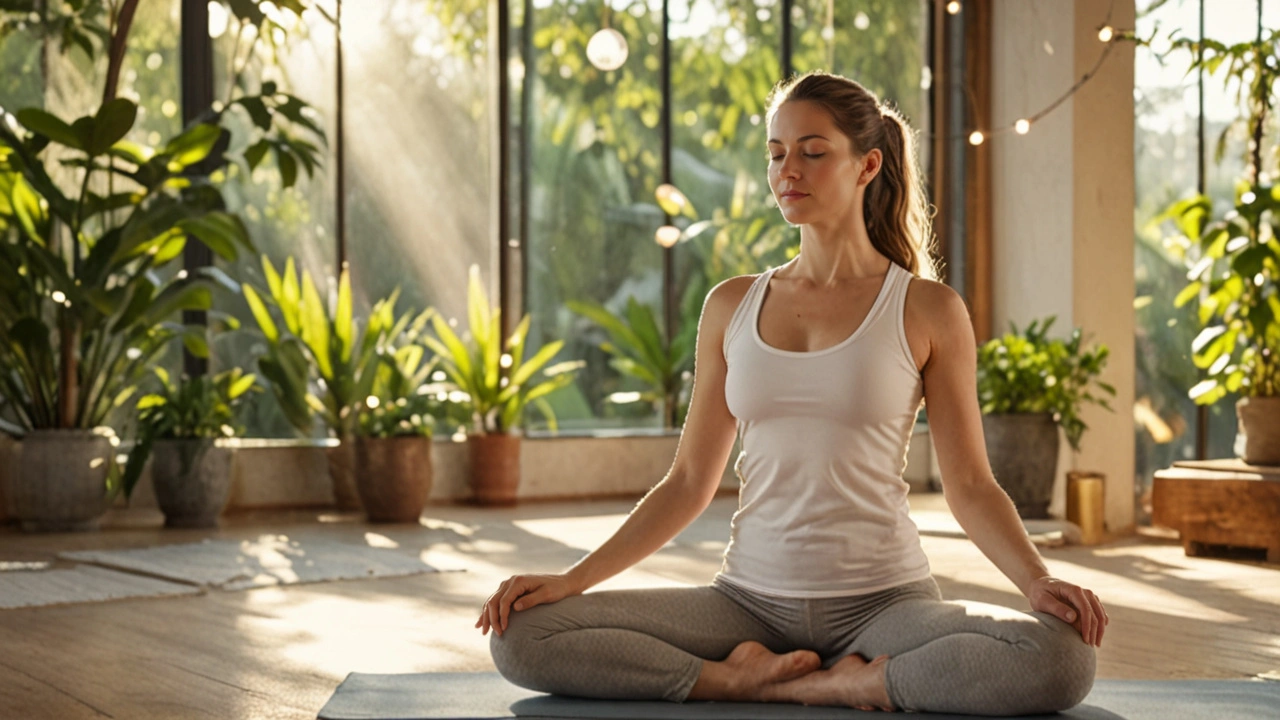
Basic Acu-Yoga Techniques
Acu-Yoga is designed to target both your energy flow and physical well-being. It focuses on specific acupoints while performing yoga poses, each selected to enhance energy and promote relaxation. One of the foundational techniques involves understanding key acupoints, known as meridians, and integrating them into your yoga routine. This combination allows you to enjoy the benefits of both disciplines simultaneously.
First, let’s talk about the Hegu Point, also known as LI4. This point is located between your thumb and index finger. Applying gentle pressure here can help relieve headaches and boost your immune system. When incorporating this into your yoga practice, you might want to stimulate this point before beginning a session, or you can press it while holding poses that involve the hands, such as the Tree Pose or Warrior I.
Another useful technique involves the Yongquan Point, or K1, found on the sole of your foot. It’s known for its grounding and calming effects, making it perfect for poses like Child's Pose or Savasana. To activate this point, press it gently with your thumb while sitting in a comfortable position or lying down.
“Acu-Yoga integrates the ancient practice of acupuncture with yoga postures, enhancing the therapeutic benefits of each,” states Dr. Sarah Brewer, a well-known expert in integrative medicine.
If you are new to Acu-Yoga, the following basic techniques will give you a solid start:
- Press and Breathe: Begin by gently pressing on the desired acupoint using your thumb or index finger. Hold for 30 seconds to a minute while breathing deeply.
- Incorporate into Poses: While holding a yoga pose, use your free hand to press an acupoint that is easily accessible. For example, while in a seated forward bend, you can stimulate the acupoints on your feet.
- Use Tools: Tools like acupressure mats or balls can be helpful for reaching difficult points. You can lay on the mat during relaxation poses or roll the ball under your feet during standing poses.
Regularly practicing these techniques can improve your energy levels and overall well-being. By harmonizing the life forces within, you not only become more attuned to your body but also more aware of subtle changes in how you feel.
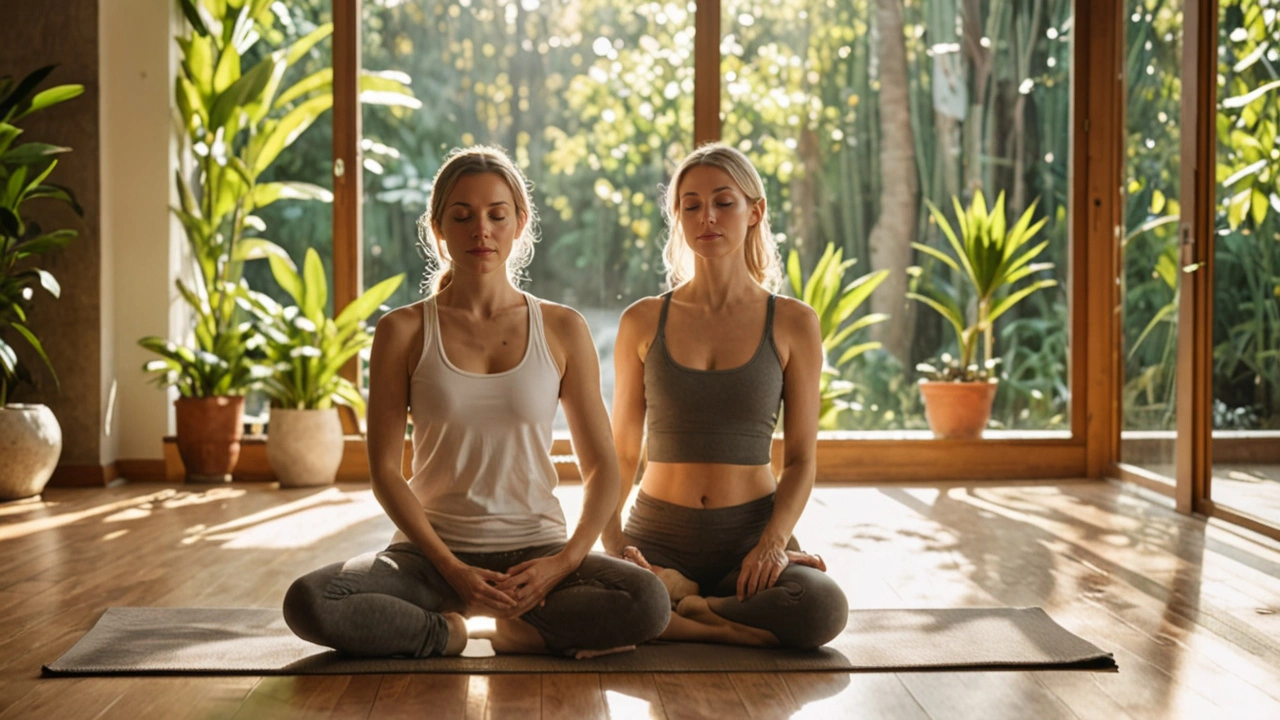
Tips for Practicing Acu-Yoga
Starting your journey with Acu-Yoga can seem a bit daunting at first. However, with the right tips and a bit of practice, you’ll find it becoming a natural part of your routine. One key starting point is consistency. Incorporate Acu-Yoga into your daily schedule, even if it’s just for a few minutes. This consistency helps your body adapt to the new techniques and yield better results over time.
First and foremost, listen to your body. Acu-Yoga is all about balance and energy flow. If a particular pose feels uncomfortable, ease into it gradually or adjust as necessary. Pain is not the goal, gentle activation of energy points is. Since Acu-Yoga combines yoga poses with acupressure, it’s essential to perform each pose mindfully, focusing on the targeted acupoints.
Setting an intention before each session can transform your practice. Whether it’s alleviating stress, boosting energy, or simply finding inner peace, having a clear goal helps you to stay focused and motivated. Pair your intention with mindful breathing. Deep, conscious breaths can heighten the effects of Acu-Yoga, making each session more impactful.
Using the right props can make a big difference too. Consider incorporating props like yoga blocks, straps, and cushions to aid in posing and open up more energy channels. These tools are especially useful for beginners, helping to maintain the correct postures without overstraining the body.
Practice in a quiet environment where you can fully concentrate. Background noise or distractions can disrupt your energy flow and make it harder to focus on the acupoints. Creating a serene space with soothing music or nature sounds can greatly enhance the experience.
According to Dr. John Matsen, a renowned holistic health practitioner, "Acu-Yoga merges the best of both disciplines, encouraging not only physical flexibility but also energetic alignment."Tracking your progress is also beneficial. Keep a journal of how you feel before and after each session to notice patterns and improvements. This can be an encouraging reminder of the benefits you are experiencing from Acu-Yoga.
Lastly, don’t shy away from seeking guidance. Whether it’s attending a workshop, following an online tutorial, or consulting with a practitioner, expert advice can provide invaluable insights and enhance your practice. Familiarize yourself with the main acupoints and their corresponding benefits, allowing you to target specific areas more effectively.
Remember, the beauty of Acu-Yoga lies in its ability to blend the physical and energetic. By integrating these tips, you’re well on your way to unlocking a more balanced and vibrant you.





